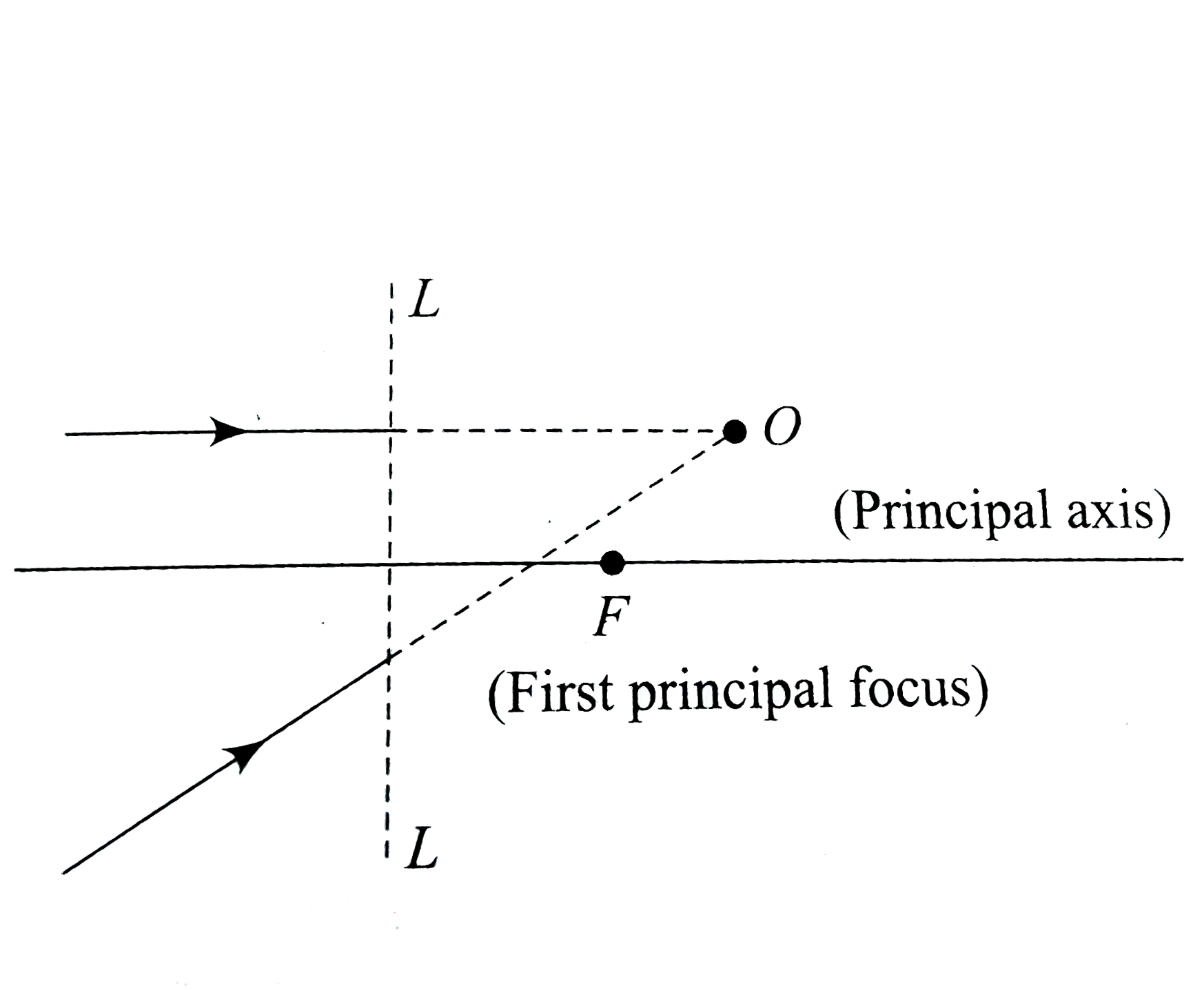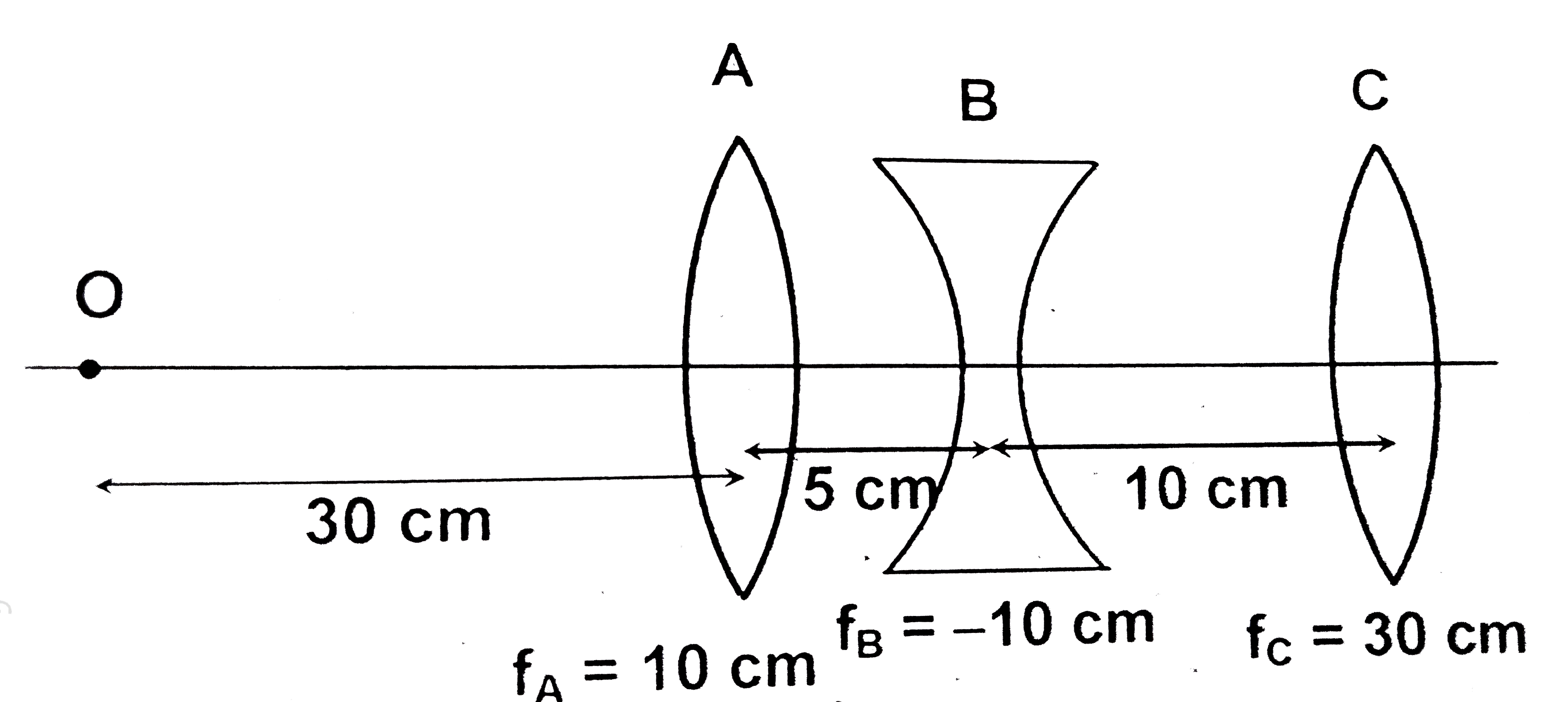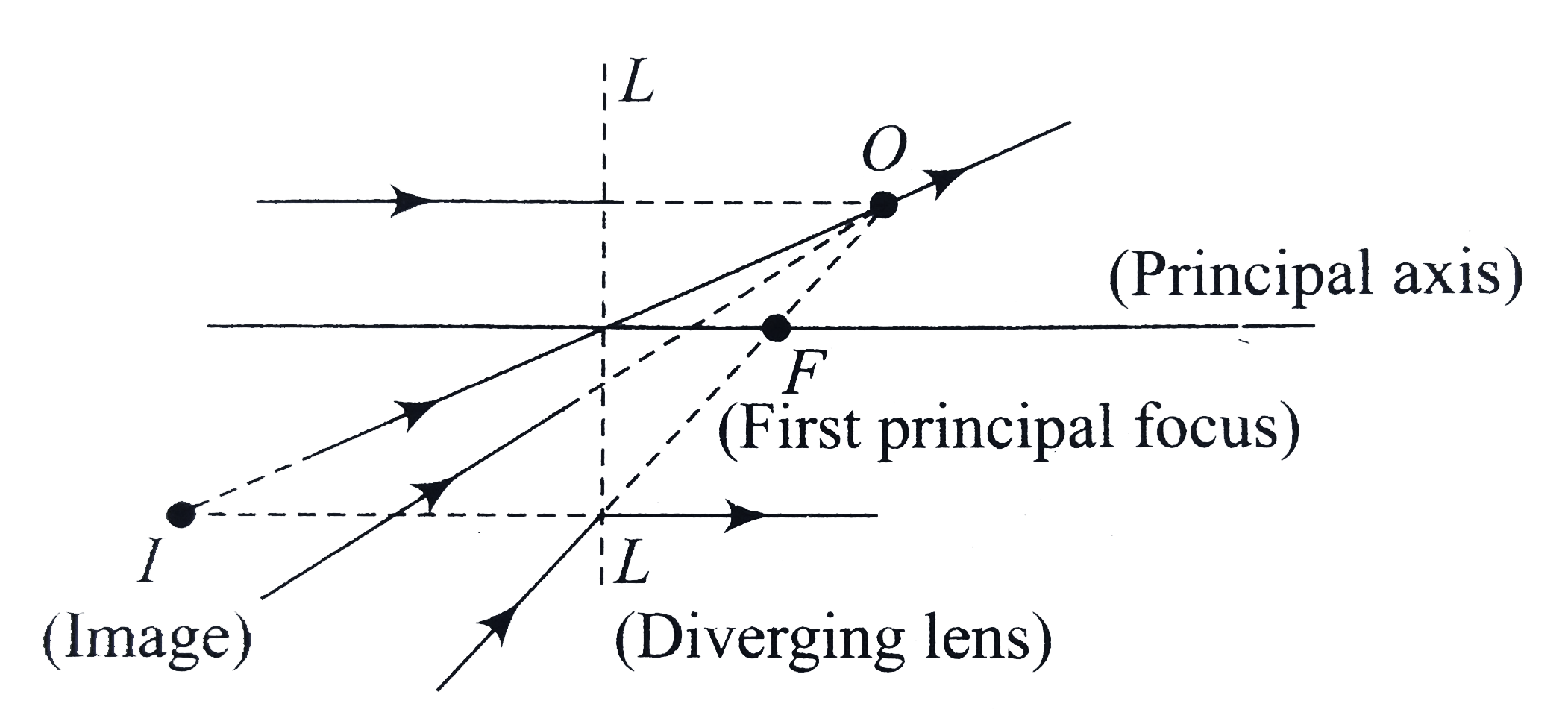Consider the rays shown in figure, as paraxial. The image of the virtual point object O formed by the lens LL is

virtual
real
located below the principal axis
located to the left of the lens
The correct Answer is:a.,c.,d.
Topper's Solved these Questions
- GEOMETRICAL OPTICSBOOK - CENGAGE PHYSICSCHAPTER - GEOMETRICAL OPTICSEXERCISE - Assertion-Reasoninig
2 Videos
- GEOMETRICAL OPTICSBOOK - CENGAGE PHYSICSCHAPTER - GEOMETRICAL OPTICSEXERCISE - Linked Comprehension
51 Videos
- GEOMETRICAL OPTICSBOOK - CENGAGE PHYSICSCHAPTER - GEOMETRICAL OPTICSEXERCISE - Subjective
26 Videos
- FRICTIONBOOK - CENGAGE PHYSICSCHAPTER - FRICTIONEXERCISE - QUESTION BANK
1 Videos
- GRAVITATIONBOOK - CENGAGE PHYSICSCHAPTER - GRAVITATIONEXERCISE - Question Bank
39 Videos
Similar Questions
Mark the correct option A) If the incident rays are converging,we have a real object B) If the final rays converging.we have a real image C) The image of a virtual object is called a virtual image D) If the image is virtual,the corresponding object is called a virtual object
View SolutionVirtual images are formed by diverging rays.
View Solution
Knowledge Check
A virtual image larger than the object can be formed by a
Aconcave mirrorBconvex mirrorCconvex lensDconcave lensA point ofject 'O' lies in front of the lens as shown in figure. Find the final position of image formed by the combined lenses.
 A10cm to the right of the lens CB15cm to the right of the lens CC20cm to the right of the lens CD30cm to the right of the lens C
A10cm to the right of the lens CB15cm to the right of the lens CC20cm to the right of the lens CD30cm to the right of the lens CA mirror forms a virtual image of a real object
AIt must be a convex mirror.BIt must be a concave mirror.CIt must be a plane mirror.DIt may be any of the mirrors mentioned above.
- A glass sphere of refractive index μ 2.4 has one half silvered. A point object O is placed in front of the sphere at a distance d as shown in the figure. The value of d for which image of O is coinciding with the object O itself is given by d = kR then value of K will be? Consider paraxial rays approximation to be valid.
View Solutiona) An object is placed well outside the principle focus of a convex lens. Draw a ray diagram to show how the image is formed, and say whether the image is real or virtual.
b) What is the effect on the size and position of the image of moving the object i) towards the lens, and ii) away from the lens?
View SolutionAn image Y is formed of a point object x by a lens whose optic axis is AB as shown in Figure. Draw a ray diagram to locate the lens and its focus. If the image Y of object X is formed by a concave mirror (having the same optic axis AB) instead of lens, draw another ray diagram to locate the mirror and its focus. Write down the steps of construction of the ray diagrams.

View SolutionShow by drawing a ray-diagram that the image of an object formed by a concave lens is virtual, erect and diminished.
View SolutionAn object is placed at a distance of 12 cm from a convex lens on its principal axis and a virtual image of certain size is formed. If the object is moved 8 cm away from the lens, a real image of the same size as that of the virtual image is formed. The focal length of the lens in cm is
View Solution

